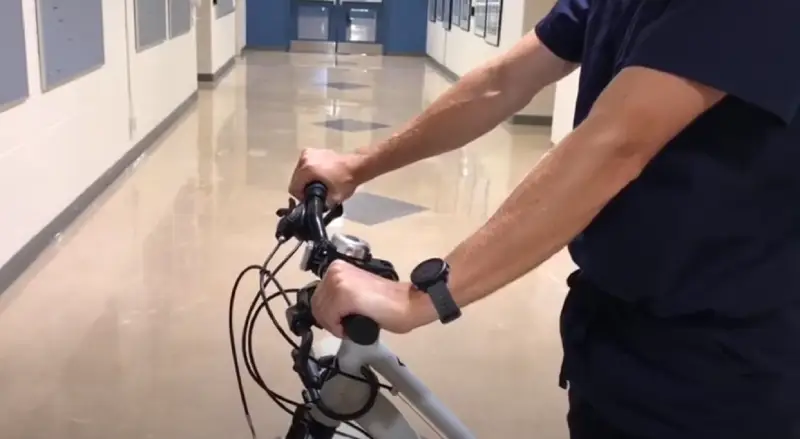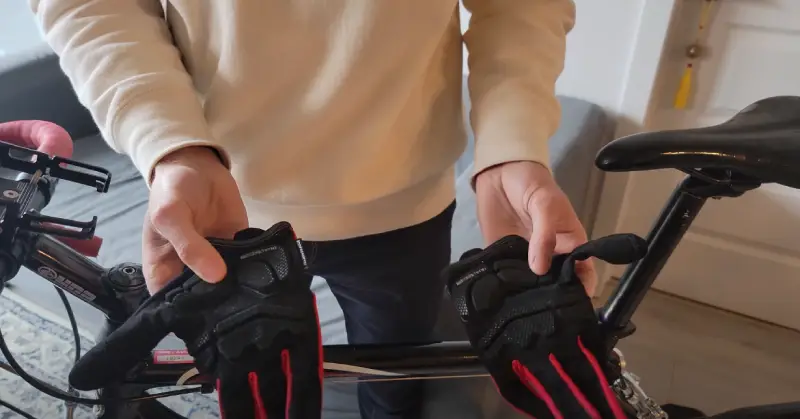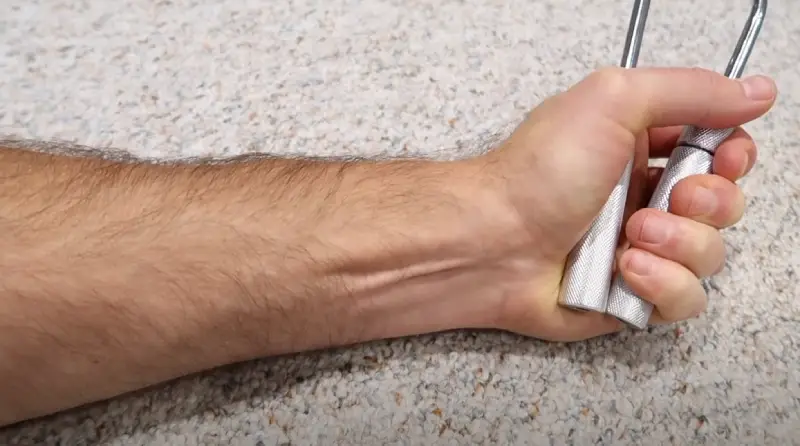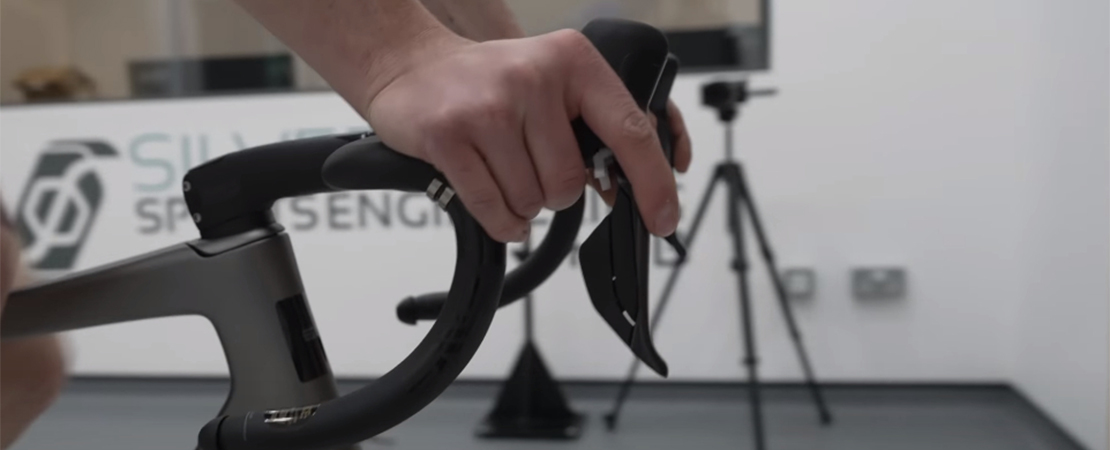Handlebar Palsy is a nerve injury that can occur in cyclists. It causes numbness, tingling, weakness, clumsiness, cramping, and pain. Repetitive stress leading to nerve compression or irritation predominantly affects the hands and fingers. It’s known as ulnar neuropathy, which involves the ulnar nerve from the inner elbow to the thumb side of the hand.
Use thicker foam handlebar tape, change hand position, and strengthen fingers, hands, and wrists to enhance comfort, reduce pressure, absorb shock, and protect wrists and nerves while cycling.
This blog post will explore how to avoid Handlebar Palsy with its prevention tips, practice, and physical therapy methods.
How To Avoid Handlebar Palsy: 6 Grip-Saving Tips

Handlebar palsy is a nerve condition that affects the hands and arms, causing numbness, tingling, and weakness. It’s challenging to pedal efficiently when you’re experiencing handlebar palsy. Follow these tips to prevent this condition.
Loosen Your Grip While Cycling
One of the primary culprits of handlebar palsy is a tight grip. Holding onto the handlebars too tightly for an extended period can compress the nerves in the palm and fingers, leading to numbness and tingling. Here are some tips to help you keep a relaxed grip while cycling:
- Use a grip that is not too tight or loose, allowing you to hold the handlebars without clenching your fingers.
- Keep your joints relaxed in your hands and elbows while cycling, allowing your blood to flow regularly.
- Shift your weight often, using your core instead of gripping the handlebars during climbing.
Change Hand Positions Frequently
Another effective way to prevent handlebar palsy is to change your hand positions often. This helps to increase blood flow in your hands and ease pressure points. Try:
- Mix up your grip on the handlebars by moving your hands to the original positions.
- Alternate between the top, middle, and bottom of your handlebars.
- Try using different handlebar attachments, such as bar ends, tri-bars, etc.
Handlebars and Gloves Should be Padded Extra

Handlebar padding can reduce road vibrations that cause discomfort in the hands, wrists, and fingers. Adding an extra padded layer to your handlebars can go a long way in preventing handlebar palsy while cycling. Properly padded gloves can provide additional cushioning and comfort to your hands.
Bike Saddles Should Be Flatter
Biking should not hurt your butt. A seat that is too high places more body weight on your hands, increasing the pressure on the nerves in your hands and causing handlebar palsy. If you feel uncomfortable, try flattening the saddle for better weight distribution.
To Avoid Handlebar Palsy: 4 Exercise
Handlebar palsy, known as ulnar neuropathy, is a common condition that affects cyclists. It occurs when the ulnar nerve runs from the neck to the hand and becomes compressed or irritated because of prolonged pressure on the handlebars. Fortunately, there are exercises and stretches that cyclists can do to prevent handlebar palsy.
Neck Exercises to Release Tension and Improve Blood Flow
Cyclists often experience tension in their necks because of the prolonged position they have to maintain. Neck exercises can help release pressure and improve blood flow, reducing handlebar palsy risks. Below are three recommended neck exercises:
- Forward tilt of the head: Keep your back straight. Put your chin forward as much as possible for 10 seconds and hold it there. Release your chair and slowly lift it when you have reached the neutral position.
- Backward tilt of the head: Tilt your head backward and bring your chin closer to your upper back. Keep holding for 10 seconds. Return to the starting position.
- Side tilt of the head: Touch your left shoulder with your ear while bending your chair to the left. Be careful not to raise your shoulder. When you can no longer turn your neck, stop. Get back to your starting position after 10 seconds. Do the same on the left side.
Wrist Exercises
Cyclists can engage in wrist exercises to enhance hand and finger muscle strength while reducing the risk of handlebar palsy. With your palm down, place your forearm on a table. You should extend your hand and wrist beyond the table.
Clench your fingers into a fist while gently bending your wrist upward and backward. Do this 10 to 15 times. Try these three exercises to stretch and strengthen these muscles:
- Finger curls with a resistive band.
- Wrist flexion and extension with a weight.
- Wrist rotations with a dumbbell.
Full-Body Approach
Cyclists should focus on stretching the forearms and upper arms, incorporating arm circles and shoulder and back stretches into their routine. Here are some exercises to consider:
- Forearm stretches with a resistive band.
- The upper arm pulls with the hand behind the head.
- Shoulder blade squeeze.
- Scapular retraction exercises.
- Arm circles and rotations.
Nerve Gliding Exercises
These exercises improve nerve mobility from your neck to your fingers. Inflammation, swelling, or scar tissue can cause a nerve to get “stuck” after injury or compression. The nerve glides keep the nerve mobile to transmit messages to and from the brain.
Physical Management for Handlebar Palsy: 3 Therapy
Handlebar palsy affects cyclists who spend long hours on their bikes, causing tingling, numbness, and weakness. Physical therapy management is crucial for treating this condition, and it involves hand-strengthening exercises, range of motion therapy, and techniques like massage and soft tissue mobilization to ease pain and promote healing.
Hand Strengthening Therapy

The weakness in the hands and wrists is a significant symptom of handlebar palsy. To combat this, physical therapists prescribe exercises that strengthen the muscles in the hands. Some examples of these exercises include:
- Grip strengthening: squeeze a rubber ball for 10 seconds with the affected hand; repeat 10 times. Gradually increase to three sets of 10.
- Finger bending exercise: Hold your fingers straight for 10 seconds while bending your fingers at a right angle; repeat 5 times.
- Finger squeeze: Place a small object (pen, coin, sheet of paper) between 2 fingers of the affected hand and hold it for 10 seconds; repeat this 5 times for each set of fingers.
Range of Motion Therapy
Another critical aspect of physical therapy for handlebar palsy is the range of motion exercises. Through these exercises, you can increase the range of motion and flexibility of the hand and forearm. Exercises include:
- Wrist flexion and extension exercises: Hold each position for 5 seconds; repeat 10 times. Bend the wrist forward and
back to a neutral place. - Cervical range of motion: rotate your head, flex your neck, extend your neck, and bend your side; hold each position for 10 seconds, then return to neutral.
Massage and Soft Tissue Mobilization
Handlebar palsy can be relieved with massage and soft tissue mobilization. During a session with a physical therapist, they may use methods such as:
- Tension and knots in the muscles can be relieved with deep tissue massage.
- Myofascial release to stretch out the muscles and connective tissues.
- Soft tissue mobilization to improve circulation and promote healing.
Conclusion
Handlebar Palsy is a condition that can cause significant discomfort for cyclists, unfortunately hindering their ability to take part in their favorite hobby. By taking the precautions, cyclists can avoid the development of Handlebar Palsy. Using gloves, proper bike fit, frequent breaks, and riding on smooth surfaces are tips that significantly prevent conditions.
Physical therapy management, such as hand and range of motion exercises, massage, and soft tissue mobilization, can dramatically improve the symptoms of handlebar palsy and promote nerve healing. Remember, prevention is better than cure.
FAQs
What Are The Different Handlebar Palsy?
Handlebar palsy, ulnar tunnel syndrome, ulnar nerve compression, Guyon Canal Syndrome (GCS), bicycle neuropathy, and tardy ulnar palsy are all conditions associated with cycling that affect the ulnar nerve.


